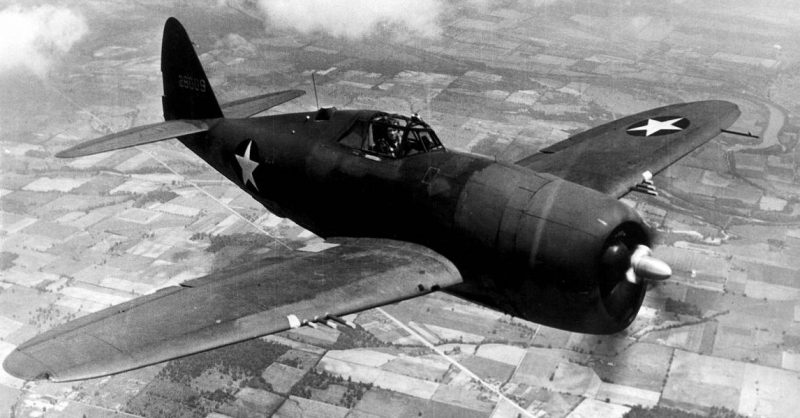Lt. Loren Hintz was on his 64th mission on April 21, 1945. He was the last of twelve planes bombing buildings that housed German troops and anti-aircraft guns near Bagnarola, Italy.
Hintz dropped his bombs but didn’t return home with the rest of his group, part of the 86th Fighter Squadron, 79th Fighter Group.
The wreckage of a P-47 was later found with human remains and a pistol that had belonged to Hintz. The remains were buried in a US cemetery in Florence, Italy.
In Iowa, Loren’s wife, Gertrude Hintz, received a telegram on VE Day. It said Loren was “missing in action.” At the time, Gertrude was pregnant with their son, Martin, and raising their 9-month-old daughter, Gretchen. Several months later, she received notice that Loren was dead. She put his medals, dress uniform, letters, poems, and other mementos in a box, grieved and moved on with her life. She raised two children while working as a secretary for a high school principal.
The kids would often look through the mementos and read their father’s journal, letters, and poetry.
Hintz was born in 1917. Known as a free-spirit, he studied Native American cultures and became so good at tribal dancing that he was invited to dance with Native Americans. He appeared in pageants, wrote poetry and corresponded with Carl Sandburg. He loved being outdoors.
“That’s why I think being a fighter pilot interested him because it was just him in the clouds and he liked to go fast,” Martin Hintz said.
Twenty years ago, when the Internet was a new thing to people, Gretchen Wronka was showing her mother a computer that was connected to the new Internet. She typed in a message board to see if anyone knew 1st Lt. Loren Hintz. A man in Washington got in touch. He had been in flight school with Gretchen’s father. Later, a researcher in Italy came across the messages. He began searching for the crash site.
Wronka’s son Hans contacted the National Archives and retrieved Loren’s military records. Maps at the University of Texas-Austin helped refine the coordinates.
The plane was located this summer buried 15 feet under a farm field.
When people in Italy heard about the plane, they showed up to help excavate in July. While they were digging, a woman brought her two young daughters to Gretchen. She wanted her daughters to say thank you. “The war is still very real,” said Wronka. “They live in houses that were bombed, their grandmothers were little girls during the war.”
Researchers learned that the wreckage of the plane set fire to a house and a barn. The farmer was killed while trying to save his cattle. The man’s son, now in his 80s, met with Hintz’s family in Italy in July.
One of the people helping search for the crash site would give family members rides at the speed and altitude Loren flew, in order to give them a sense of what he experienced on his last mission.
Ground-penetrating radar was used to find the exact location of the plane. A backhoe was brought in to begin the excavation. Among the people at the excavation was Eric Trueblood, owner of AirCorps Aviation in Minnesota. His company restores vintage aircraft and is currently restoring a plane of the same type that Hintz flew.
He came to provide technical expertise. As each part was recovered, he entered it into a computer to check the part numbers.
The first piece recovered was a casting of a lever Hintz would have used to retract the tail wheel. Trueblood found that the part number matched a part from the type of plane Hintz flew. Other pieces and parts were recovered, but everyone finally knew they had the right plane when they pulled up Hintz’s dog tags, Journal Sentinal reported.
“When they found the dog tags everyone starting hooting and hollering,” Martin Hintz said.
A priest blessed the human remains found on the site. They were then handed over to the local authorities and then on to the American Embassy.
“It’s not as if we didn’t know him,” Hintz said, “It took us until this year, though, to meet him.”
